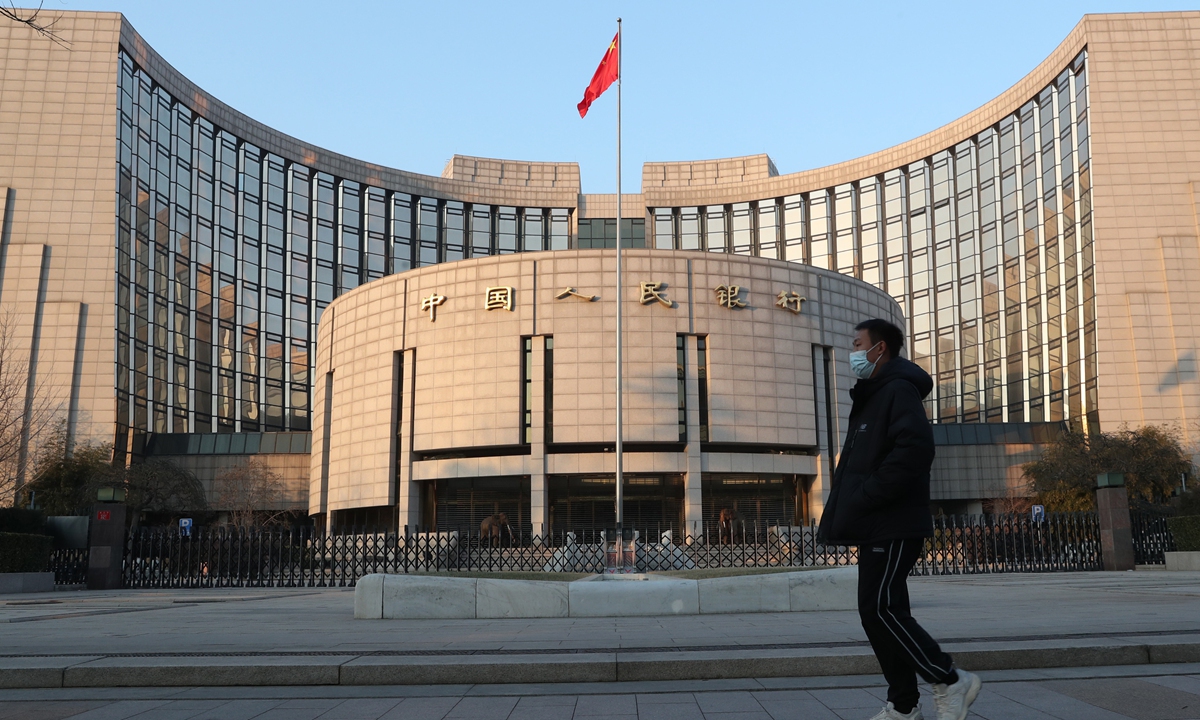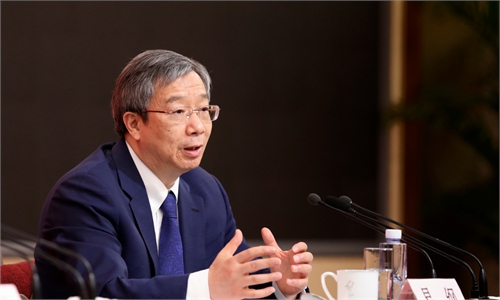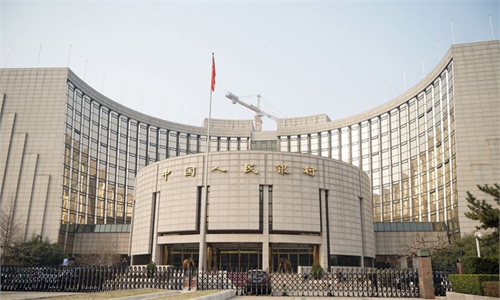China’s central bank to ramp up policy support for businesses, real economy: official
PBC has a wide array of aggregate, structural monetary tools to shore up growth: expert

China's central bank Photo: CFP
Amid the headwinds of multiple domestic Omicron flare-ups and global volatility, Chinese economic officials have pledged new monetary tools to help companies weather the current difficulties and strive for swift resumption of operations, as the country aims for stable economic and social development, while fighting the highly transmissible Omicron variant.
China's central bank will readjust its monetary policy to expand support for the real economy to stabilize market entities, prices, employment and public expectations, in order to achieve the nation's annual economic and social development goals and keep the economy running within a reasonable range, Chen Yulu, deputy governor of the People's Bank of China (PBC), said in an interview with the Xinhua News Agency on Saturday.
The PBC plans a re-lending facility equivalent to 100 billion yuan ($15 billion) for the logistics and warehousing sectors, which have been hit hard by the outbreaks, and it will also support banks' expansion of credit supply and encourage financial institutions to reduce service fees, Chen said.
To help alleviate difficulties faced by companies in pandemic-hit Shanghai, Yu Wenjian, director of the financial consumer protection bureau of the PBC, said at a briefing on Sunday that the PBC Shanghai Head Office has announced 20 financial measures to help companies resume work and production.
He said that the Head Office will encourage financial institutions to connect with companies on Shanghai's "whitelist" of firms allowed to resume work to expand lending by making use of long-term funds released by the reserve requirement ratio (RRR) cut.
More credit will be provided to companies operating in segments hit hard by the epidemic like tourism, restaurants, retail, transportation, logistics, entertainment and exhibitions, Yu said, stressing the intensity of inclusive loans for small and micro-sized enterprises.
"Whether it's fiscal subsidies or inclusive lending, we expect more concrete details so that we can make good use of the policies," a Shanghai-based travel agency owner surnamed Liu told the Global Times on Sunday.
Liu said his travel agency has been suspended for about half a year due to sporadic case spikes prior to the city-wide anti-epidemic restrictions in Shanghai. "Hope the latest outbreak in Shanghai can be put under control as soon as possible," he said, noting that inter-provincial travel is expected to resume only in one or two months after the city lifts the restrictions.
Although achieving dynamic zero-COVID affects some economic activities in the short term, the PBC has a wide array of aggregate and structural monetary tools at its disposal to shore up the real economy for the rest of the year, said Dong Dengxin, director of the Finance and Securities Institute of the Wuhan University of Science and Technology.
The crux is efficiently steering money into the real economy and helping companies earnestly invest in R&D and technological upgrading, for which, the precision function of structural monetary policy tools should be given full play, Dong told the Global Times on Sunday.
Displaying the breadth of its policy tools, the central bank recently announced the creation of a one-year technology innovation re-lending facility totaling 200 billion yuan, a 40-billion-yuan re-lending quota for inclusive elder care, and an additional 100 billion yuan special re-lending facility for the clean use of coal.
In addition, the central bank has turned over more than 1 trillion yuan in surplus profits to the country's central budget this year, which is expected to propel the growth of M2 - a broad measure of money supply that covers cash in circulation and all deposits - by 0.5 percentage points, Chen said.
The PBC's recent move to cut the RRR by 0.25 percentage points in April, following an RRR cut in December of 0.5 percentage points, will increase long-term capital supply for domestic financial institutions, thus contributing to maintaining reasonable and sufficient liquidity.
An accelerated shift in developed countries' monetary policies has inevitably created spill-over effects on emerging markets, but this global volatility is unlikely to rattle China's market as the country has witnessed a steady recovery pace, controllable inflationary pressure and optimized economic structure, Chen added.
China's economy has maintained a steady recovery, with GDP growing 4.8 percent year-on-year to 27.02 trillion yuan in the first quarter of 2022, quickening from a 4-percent increase in the fourth quarter last year.



